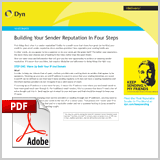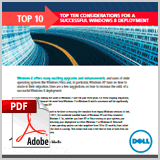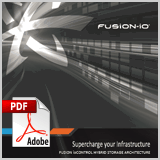Hello etechnews today Welcome to this Tech Resources update from The Register
 | First things first: what is a sender reputation? Similar to a credit score that shows how great (or terrible) your credit is, your email sender reputation shows mailbox providers how reputable your sending habits are. In other words, do you appear to be a spammer or do your sends get the green light? The better your reputation, the more likely your chances are of landing in the inbox rather than the spam folder. Here are some steps and information that will give you the best opportunity to achieve an amazing sender reputation. It’s easier than you think, but requires discipline and adherence to doing things the right way. Download Now |
 | As Microsoft rolls out Windows 8 to developers, OEMs, consumers and enterprise IT audiences, there’s a lot to be impressed with. Coming just three years after the commercial release of Windows 7, the new operating system has excited the industry with enhanced features such as a refreshed and energized user interface, an upgraded overall user experience, improved security and plenty of bells and whistles for software publishers and corporate developers. Download this whitepaper for a few suggestions on how to increase the odds of a successful Windows 8 deployment. Download Now |
 | Risk management is not about absolutes or certainty; it’s about playing the odds. This principle is particularly relevant when it comes to securing end user computing activity. We have no shortage of solutions available to us in this area. Indeed looking at what’s available on the market, it’s clear that many options exist for tackling the same or similar requirements. The problem, however, is that none of them are 100% effective at what they are supposed to do. But even if they were, the complexity of the environment along with the dynamic nature of the problem means no single technology or service is ever going to be enough. Minimising your exposure is about mixing the right cocktail of solutions and approaches to achieve an ‘acceptable’ level of protection for your organisation and the situations that arise within it. In an attempt to understand what this translates to in practice, we conducted an online research study during June and July 2013 in which data was gathered from 977 IT and business professionals. In terms of scope, the questionnaire used was one of the broadest we have ever developed at Freeform Dynamics, and our thanks go out to all of those who had the patience to work through it. The exercise was well worth it, however, as we ended up with a good holistic view of the things that really matter. Download Now |
 | For many organizations, NAS implementations are growing out of control and wreaking havoc for IT. The causes are many and varied. Applications leveraging NAS vary from virtual server and virtual desktop implementations to digital imaging, computer generated animation rendering, energy exploration, and financial modeling - not to mention the billions of users around the globe who continually create and consume unstructured data such as video, audio, and text files. In addition, because NAS devices are easy to set up and manage and don’t require esoteric storage knowledge, it is simple to add new devices for capacity or performance. Before you know it, your NAS infrastructure can become a costly and inefficient nightmare of multiple file systems across too many devices. This ESG Lab validation report documents hands-on testing of the Avere FXT Series Edge Filer with the AOS 3.0 operating environment. Download Now |
 | For decades, CPU manufacturers have innovated around increasing processing power and performance, while disk-drive manufacturers have focused on increasing capacity. These contrasting goals have created a utilization problem with today’s IT infrastructures. While flash storage is the answer from a performance perspective, it must be engineered and implemented correctly. One way to do this is by taking what was traditionally a consumer technology and transforming it into an enterprise solution. Fusion‐io delivers enterprise‐class flash memory technology, and has designed it into the first affordably priced shared storage system. While traditional vendors struggle to optimize flash performance, Fusion‐io has developed a solution that avoids bottlenecks and provides new performance management capabilities required to maximize the utilization of flash. Read this whitepaper to find out more Download Now |
|
Terms and Conditions
By downloading any of the papers, or by watching for any of the live or on-demand events above, you agree that your supplied personal details will be passed on to the sponsor of the paper/event, and that this organisation may contact you in the future with further information about their products and services. You can request a stop to such communications at any time.





No comments:
Post a Comment
Note: Only a member of this blog may post a comment.